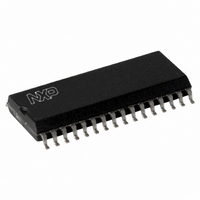CLRC63201T/0FE,112 NXP Semiconductors, CLRC63201T/0FE,112 Datasheet - Page 83

CLRC63201T/0FE,112
Manufacturer Part Number
CLRC63201T/0FE,112
Description
IC I.CODE HS READER 32-SOIC
Manufacturer
NXP Semiconductors
Series
I-Coder
Specifications of CLRC63201T/0FE,112
Rf Type
Read Only
Frequency
13.56MHz
Features
ISO14443-A, ISO14443-B, ISO15693, ISO18000-3
Package / Case
32-SOIC (0.300", 7.50mm Width)
Product
RFID Readers
Operating Temperature Range
- 25 C to + 85 C
Lead Free Status / RoHS Status
Lead free / RoHS Compliant
Lead Free Status / RoHS Status
Lead free / RoHS Compliant, Lead free / RoHS Compliant
Other names
568-2199-5
935269690112
CLRC632
CLRC63201TD
935269690112
CLRC632
CLRC63201TD
Available stocks
Company
Part Number
Manufacturer
Quantity
Price
Company:
Part Number:
CLRC63201T/0FE,112
Manufacturer:
IR
Quantity:
3 400
Part Number:
CLRC63201T/0FE,112
Manufacturer:
NXP/恩智浦
Quantity:
20 000
NXP Semiconductors
CLRC632_35
Product data sheet
PUBLIC
11.2.2.3 Collision detection
If an EOF pattern is detected or the signal strength falls below the RxThreshold register
MinLevel[3:0] bits setting, both the receiver and the decoder stop. Then the Idle command
is entered and an appropriate response for the microprocessor is generated (interrupt
request activated, status flags set).
When the ChannelRedundancy register bit RxCRCEn is set, a CRC block is expected.
The CRC block can be one byte or two bytes depending on the ChannelRedundancy
register CRC8 bit setting.
Remark: If the CRC block received is correct, it is not sent to the FIFO buffer. This is
realized by shifting the incoming data bytes through an internal buffer of either one or two
bytes (depending on the defined CRC). The CRC block remains in this internal buffer.
Consequently, all data bytes in the FIFO buffer are delayed by one or two bytes. If the
CRC fails, all received bytes are sent to the FIFO buffer including the faulty CRC.
If ParityEn is set in the ChannelRedundancy register, a parity bit is expected after each
byte. If ParityOdd = logic 1, the expected parity is odd, otherwise even parity is expected.
If more than one card is within the RF field during the card selection phase, they both
respond simultaneously. The CLRC632 supports the algorithm defined in
ISO/IEC 14443 A to resolve card serial number data collisions by performing the
anti-collision procedure. The basis for this procedure is the ability to detect bit-collisions.
Bit-collision detection is supported by the Manchester coding bit encoding scheme used in
the CLRC632. If in the first and second half-bit of a subcarrier, modulation is detected,
instead of forwarding a 1-bit or 0-bit, a bit-collision is indicated. The CLRC632 uses the
RxThreshold register CollLevel[3:0] bits setting to distinguish between a 1-bit or 0-bit and
a bit-collision. If the amplitude of the half-bit with smaller amplitude is larger than that
defined by the CollLevel[3:0] bits, the CLRC632 flags a bit-collision using the error flag
CollErr. If a bit-collision is detected in a parity bit, the ParityErr flag is set.
On a detected collision, the receiver continues receiving the incoming data stream. In the
case of a bit-collision, the decoder sends logic 1 at the collision position.
Remark: As an exception, if bit ZeroAfterColl is set, all bits received after the first
bit-collision are forced to zero, regardless whether a bit-collision or an unequivocal state
has been detected. This feature makes it easier for the control software to perform the
anti-collision procedure as defined in ISO/IEC 14443 A.
When the first bit collision in a frame is detected, the bit-collision position is stored in the
CollPos register.
Table 139
shows the collision positions.
Rev. 3.5 — 10 November 2009
Multiple protocol contactless reader IC (MIFARE/I-CODE1)
073935
CLRC632
© NXP B.V. 2009. All rights reserved.
83 of 126















